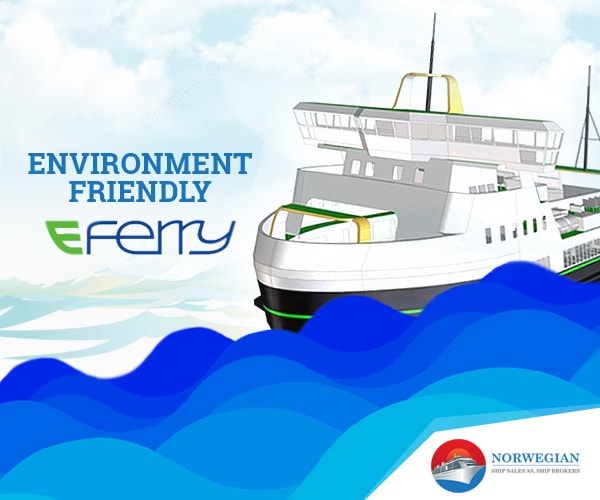An initiative called H2020 taken by the European Union, electronic ferry or popularly known as E-ferry is a new type of shipping vessel that is under development and is currently being tested in the Danish waters.
This is an innovative project that is aiming to generate an electrically powered ferry to increase cost-effectiveness and reduce the impact of ships on the environment. Over the last few years, shipowners have been looking for easy solutions to find an alternative for fuel that will further help reduce environmental footprint. With the introduction of the 100% electronically charged E-ferry, this problem seems to have come to an end. A game-changing idea, the electric vessels are not only expected to reach a great speed (cutting down a 70 minutes ride to about 55 minutes) but overcome the major limitations faced by the current vessels.
E-ferry is considered to be the world’s first most powerful ferry that runs completely on electricity.
Understanding the Functions
It will be incorrect to not mention the already existing electric ferries, however, these run on a combined power of electricity and fuel. With E-ferry the scenario completely changes. Since the latter runs on batteries, these are expected to travel faster and smoother. The E-ferry can cover a distance of 21.4 nautical miles or nearly 38 km before having to recharge the batteries again. Small inland journeys will no longer be same with the introduction of these ferries.
The addition of a green profile has made these ferries extremely popular. These high-speed ferries are expected to cut down the CO2 emission by almost 20,000 tonnes. It also cuts down 1,350 kg of Sulphur Dioxide, 41, 500 kg of Nitric Oxide, and almost 2,500 kg of other harmful chemicals, which are generated by shipping vessels every year. The contribution that these ferries are making to the environment is what is actively making the most noise. Not only do these reduce the carbon footprint, but it is also contributing to reducing noise and waves, which can further benefit both wildlife and people.
The Limitations of the Project
While this project is being hailed as one of the smartest moves made in the shipping industry with shipowners indulging in their own version of E-ferries, there are certain limitations that cannot be overlooked. Some of these has been summarized as follows.
- The docks need to be optimized so as to allow the vessels to charge properly. The electric ferries need to be charged for 12 minutes before making a two-hour trip. This means that the docks have to be prepared to charge the vessels before they can take off.
- The charging ports deliver about 4000 volts of electric current. This has also raised the issue of passenger safety. Too close to the unit can result in an accident.
- The vessel mounts onto the leaf of the bridge which has resulted in space crunch for both pedestrians as well as cars.
However, with due time and proper planning, solutions to the above-mentioned problems can be found. Old ports that have been out of use for a long time are being modified to accommodate the E-ferries.
The introduction of the green ferry project has induced significant changes to the industry itself. With a target of launching in 2020, various countries from the European Union have come together to fast-track the project. Good progress is being made, which has further left the officials as well as the shipowners for a hopeful, greener future.


